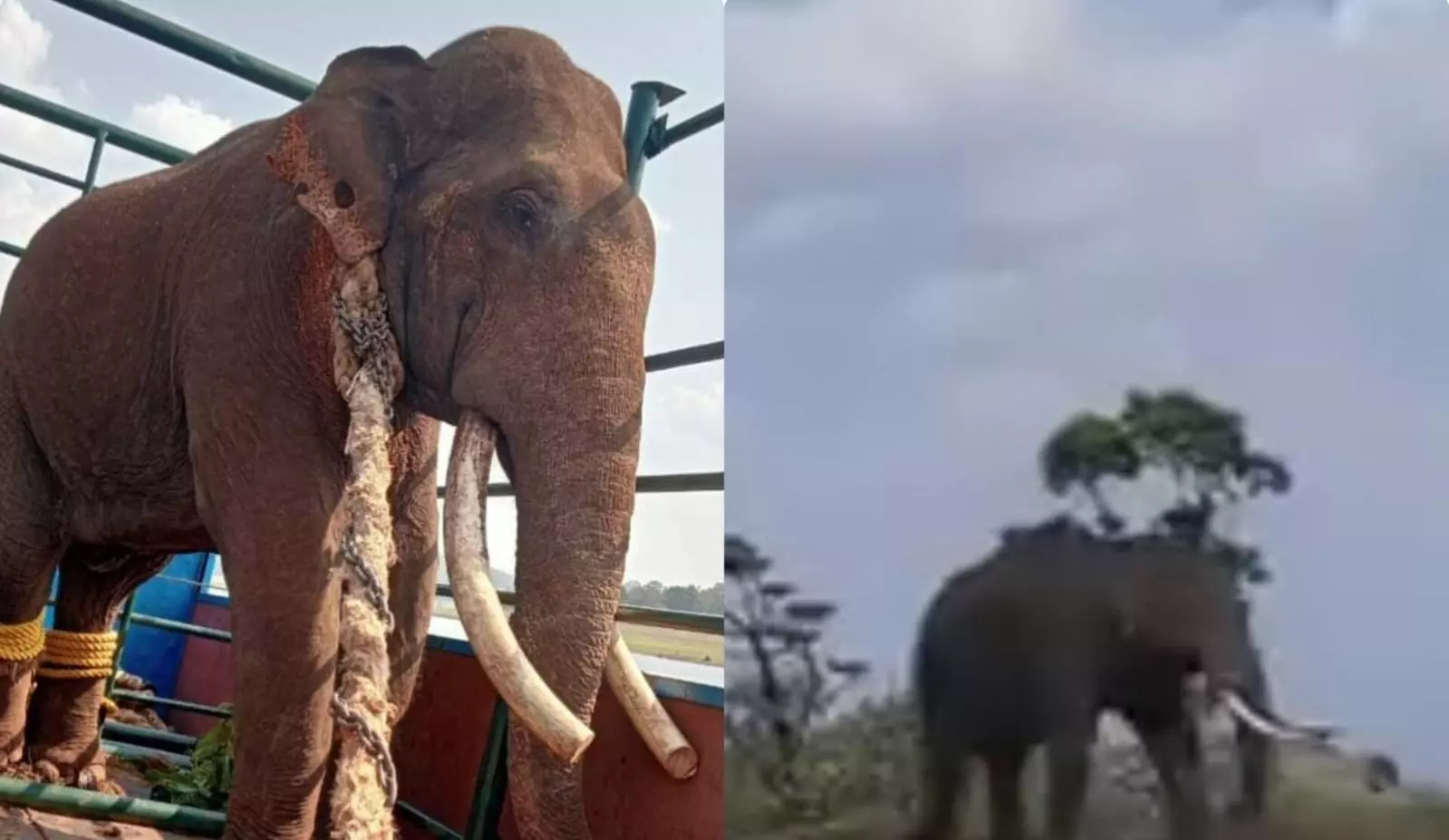
How a 'dental surgery' has left a Bandipur elephant vastly relieved
The tusks had grown long and twisted, making it impossible for the huge elephant to feed on tall grass or anything else growing at ground level

It was one happy tooth-extraction story in Bandipur National Park, in which not only did the owner of the said “teeth” get relief from pain but so did many others who had been bearing the brunt of those.
We are talking about an elephant, a tusker that roams the forests of Bandipur National Park in Karnataka. Though tusks mark the majesty of a male elephant, for this tusker, they had turned into a nuisance.
Tall “tusk”
The tusks had grown long and twisted, making it impossible for the huge elephant to feed on tall grass or anything else growing at ground level. Especially in this scorching summer, with trees shedding their shrivelled leaves, it’s the ground-level grass near waterbodies that sustain elephants and other wild animals. But for this magnificent jumbo, the tusks would come in the way, their tips touching the ground and preventing it from foraging for food.
Hence, the only option for the animal was to feed on the leaves of tall trees, in the process plundering farms and orchards and becoming a menace for the surrounding villages of Himavad Gopalaswamy Hill in HD Kote taluk. The elephant had particularly taken to breaking into orchards and devouring banana, coconut, and jackfruit trees by bending them with its trunk.
“Operation Dantamochan”
Finally, the furious farmers of Naihalla, Gendattur, and other villages under Gundre Wildlife Zone approached the forest department, which launched “Operation Dantamochan” (tooth extraction). The tusker was captured near Gopalaswamy Hill with the help of tamed elephants Bhima and Abhimanyu. And with the help of expert wildlife doctors, both its tusks were sawed almost in half.
Relieved of its elephantine burden, the pachyderm started eating the grass off the ground easily. With the dental surgery successfully done, the foresters soon released it in the Kabini backwaters of the Gundre Wildlife Zone. Its movement is still being monitored though but it has not yet entered any farms.
What is tusk trimming?
Wildlife conservationist and journalist Joseph Hoover, who spoke to The Federal Karnataka about the operation, explained, “When the tusks grow long and become interlocked, it becomes difficult for elephants to use their trunks. They also interfere with movement. Sometimes, even the lives of elephants are at risk due to such overgrown tusks. So, these are then scientifically cut on the advice of wildlife doctors, and it is a valid move under the Wildlife Act.”
Hower added that the foresters initially did not know about the overgrown tusks. “The elephant was captured because it was destroying farmers’ crops. It was only after its capture that they found out it was unable to eat ground-level food and hence raiding orchards. So, the decision to trim its tusks was taken,” he explained.
(This article was originally published in The Federal Karnataka)

